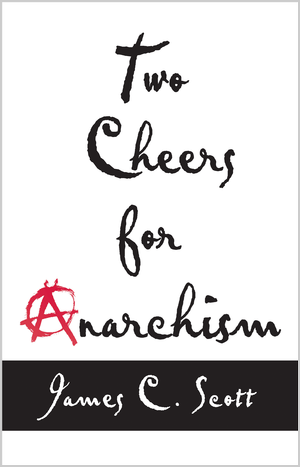Both markets and ecosystems can, and have, been viewed as being shaped by feedback processes that push them towards a steady state – in markets this is the “invisible hand” – in ecology it is “succession.” However, what has been appreciated in ecology, and has been reluctantly included in economics is that these invisible hands can push systems into turbulence or even tear them apart.
The 2008 financial crisis revived widespread interest in the work of American economist Hyman Minksy who developed a theory on the evolution of financial crises that not only provides a strong framework to understand the forces that created the crisis but also has strong parallels to the work of Canadian ecologist C.S. “Buzz” Holling, an originator of resilience thinking, who developed a theory of social-ecological crises that shares many features with Minksky’s theory.
Minsky and Holling both showed how successful regulation could lead systems into a trap of decreasing resilience and increased vulnerability.

Minsky’s “Financial instability hypothesis” argues that as an economy flourishes people and organizations lose their motivation to consider the possibility of failure, because the costs of concern are high and apparent while the benefits of a relaxed attitude are immediate. Loans become less and less secure, bad risks drive out good, and the resilience of the entire economy to shocks is reduced. Minsky argued that economic resilience is slowly eroded as there is a shift of dominance between three types of borrowers: hedge borrowers, speculative borrowers, and Ponzi borrowers. Hedge borrower have a cash flow that they can use to repay interest and principal on a debt, while the speculative borrower can cover the interest, but must continually roll over the principal, and Ponzi borrowers, who have to borrow more to cover their interest payments. Hedge borrowers are least vulnerable to economic changes, while Ponzi borrowers are the most. As the economy does well, speculative and Ponzi borrowers can outperform safer borrowers. For example, highly leveraged investments in housing can yield big profits as house prices increase, driving further investment in housing and housing price increases. As the use of Ponzi finance expands within the finance system the financial system becomes increasingly vulnerable to any change in the perceived value of Ponzi borrowers assets can trigger a collapse that includes speculative and hedge borrowers. When a shock or change in perception causes the networks of loans to unravel, crisis moves from the financial sector other parts of the economy. This theory fits many aspects of the 2008 financial crisis where public and private risk regulations were relaxed, and there was a lot of speculative and Ponzi borrowing in the US housing market. For example, financial market regulation, accounting standards were lowered, and mortgage risk assessments were abandoned.
 Similarly, Holling’s “Pathology of ecosystem management” argues that the management of ecosystems to increase the production of a desired ecological services often achieve their goal by simplifying ecosystems and reducing environmental variation. For example, forest management removes undesired species and suppresses wildfire and produces more timber which leads to sawmills and jobs. While these efforts are often initially successful, over the longer term these effort can trap a system into a situation where there is:
Similarly, Holling’s “Pathology of ecosystem management” argues that the management of ecosystems to increase the production of a desired ecological services often achieve their goal by simplifying ecosystems and reducing environmental variation. For example, forest management removes undesired species and suppresses wildfire and produces more timber which leads to sawmills and jobs. While these efforts are often initially successful, over the longer term these effort can trap a system into a situation where there is:
1) a high societal dependence on continuous supply of ecological benefits and
2) a declining ability of an ecosystem to recover from and regulate environmental variation.
Societal dependance arises as investment follows the initial success. The decline in ecological resilience occurs because of management’s simplification the spatial pattern, food web, and disturbance dynamics of the managed ecosystem. Often as resilience declines, management has to increasingly invest in artificial ecological regulation to maintain ecological benefits and protect its sunk investment infrastructure. This dynamic can trap people within a social-ecological system which is unprofitable, has low resilience, and is difficult to disengage from due to sunk cost effects. For example, logging and forest can lead to more investment in timber mills and towns and the simplified forest, which is more vulnerable to insect outbreaks. These continual outbreaks require investment in pest control, which decreases the profitability of the logging. Simultaneously, it is difficult to stop logging or pest control due to the people living in the towns and the investment in the timber mills.
Holling’s pathology was originally developed in the 1980s. Since then Holling’s ideas have been substantially developed by ecologists and others environmental scientists over the past twenty years (notably in the book Panarchy). Researchers have tried to identify different types of social-ecological traps. Resilience researchers have created quantitative models explore and statistical methods to detect instabilities, and expanded upon the pathology to explore the roles of leadership and agency in creating new social-ecological trajectories.
Unlike Holling’s work, Minsky’s work has been largely marginalized within mainstream economics, though it has retained a dedicated following among financial and some hetrodox economists. The lack of a rigourous mathematical structure to Minsky’s ideas seems to have been much more of a barrier in economics, than the similar lack in Holling’s ideas was to ecology. However, I expect that the main reason for the lack of interest was that instability was not seen as a particularly relevant idea. The financial turmoil of the last few years has shown that despite economists dreams of a great moderation due to wise regulation, regulators and markets have not been able to tame the destabilizing dynamics of global markets. Indeed, the financial crisis of 2008 and the recession that has followed has demonstrated that many regulations likely have made this crisis worse by reducing diversity, tightening couplings, and decreasing adaptive capacity. For example, the Euro prevented countries, like Greece or Spain, from shifting their exchange rates with other countries.
However, the crisis has provoked substantial new interest in Minksy, and now eminient mainstream economists such as Paul Krugman have now attempted to connect his work to the central core of economics (see Eggertsson & Krugman 2012 paper & a critique from hetreodox financial economist Steve Keen).
The financial, political, price turbulence since 2008 has increased interest in theories of instability, but most theory is based upon stability, or short term departures from stable points. This undersupply of theories of instability, makes the work of Holling and Minksy more valuable. In separate realms and identifying different mechanisms, the work of Minsky and Holling suggests instability cannot be avoided, as stability creates instability. This understanding can be used to help navigate instability, and it highlights the value of working to create new theories to understand, analyze, and navigate social-ecological instability – something that we are working on at the Stockholm Resilience Centre.
Further readings:
Holling (many followup articles are available in Ecology & Society)
- Holling, C.S., 1986. The resilience of terrestrial ecosystems: local surprise and global change. In: Clark, W.C., Munn, R.E. (Eds.), Sustainable Development of the Biosphere. Cambridge University Press, London, pp. 292–317.
- Holling, C.S., Meffe, G.K., 1996. Command and control and the pathology of natural resource management. Conservation Biology 10, 328–337.
- Gunderson, L.H. & Holling, C.S. (Eds.). 2002. Panarchy: Understanding Transformations in Human and Natural Systems. Island Press.
Minsky (lots of his publications are available on the Levy Institute’s website)
- Minsky, H. P. (1975). John Maynard Keynes. New York, Columbia University Press.
- Minsky, H. P. (1982). Can “it” happen again? : essays on instability and finance. Armonk, N.Y., M.E. Sharpe.
- Minsky, H. P. (1986). Stabilizing an unstable economy, Twentieth Century Fund Report series, New Haven and London: Yale University Press.
- Wray, L.R. 2011 Minsky Crisis in The New Palgrave Dictionary of Economics, Online Edition, 2011. Edited by Steven N. Durlauf and Lawrence E. Blume. Palgrave.
On the web Ashwin Parameswaren has been building on Minksy and Holling’s ideas at his websites Macroeconomic resilience and All systems need a little disorder.




 Political scientist James C. Scott, author of a series of ground breaking books that explore some of political and anthropological aspects of resilience has a new book out
Political scientist James C. Scott, author of a series of ground breaking books that explore some of political and anthropological aspects of resilience has a new book out